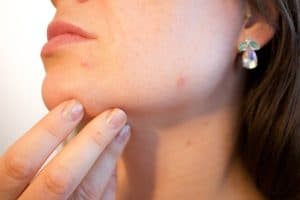
The American Academy of Dermatology Association estimates that nearly 50 million Americans suffer from acne annually. Acne usually starts during puberty and may still affect you as a young adult. You may have Downtown DC acne due to the clogging of tiny skin pores by excess oil, bacteria, ingrown hairs, or dead skin cells. You are at more risk of acne because of poor sleep, smoking, stress, hormonal changes, and endocrine diseases.
Although acne does not threaten your health, it can be painful and cause scars on visible areas of your skin, including your face. The scarring on visible locations of your body may affect your self-esteem and confidence, leading to anxiety and depression. Therefore, you must focus on preventing and treating acne. You can only effectively treat your acne if you understand how to identify the different types of acne that exist. Some people have looked into Gundry MD Dark Spot Diminisher reviews for fading acne scars and dark spots. Consequently, below are the types of acne that may affect you.
1.Whiteheads
Whiteheads are acne resulting from the collection of dead skin cells, bacteria, and excess oil production within your tiny skin pores.
Whiteheads appear on your skin as small or medium pimples or bumps with a whitish color. The whitish color comes from the development of pus within the clogged skin pores. Unlike other types of acne, you will not experience inflammation and redness when you have whiteheads.
Avoid picking at whiteheads because they may become irritated, leading to a permanent blemish on your skin.
2 . Blackheads
Blackheads appear as if your skin pimples or bumps have dirt, which is not the case since there is an irregular light reflection off your clogged hair follicles. Your clogged skin pores may also appear as dark spots because of exposure to oxygen.
Your doctor can treat blackheads through prescription medications, chemical peels, laser skin resurfacing, and home remedies like sugar or salt scrubs.
Laser skin resurfacing involves exposing your blackheads to intense light beams that encourage the production of proteins that support healthy skin and the healing and elimination of skin blemishes.
On the other hand, scrubbing an area affected by blackheads on your skin using sugar or salt may also help exfoliate the dead cells and bacteria on the outer layer of the skin. Before scrubbing, make sure your face is wet and when done, thoroughly rinse your face.
3.Papules
As a type of acne, they appear as small, raised red bumps on your skin. Often, the skin blemishes are sensitive to touch, and when you squeeze them, they can become more inflamed, forming scars. The pimples may form pus, which can take a few days.
4.Acne nodule
If your skin bump is large and feels firm when you touch it, you may have an acne nodule. Because acne nodules develop deep within the skin layers and are often painful, you should go to your dermatologist for professional treatment.
An acne nodule will take more time to heal and puts you at more risk of scars.
Contact Metroderm DC Medical, Laser, and Aesthetic Dermatology Center 2 today to schedule an appointment with an acne specialist.
